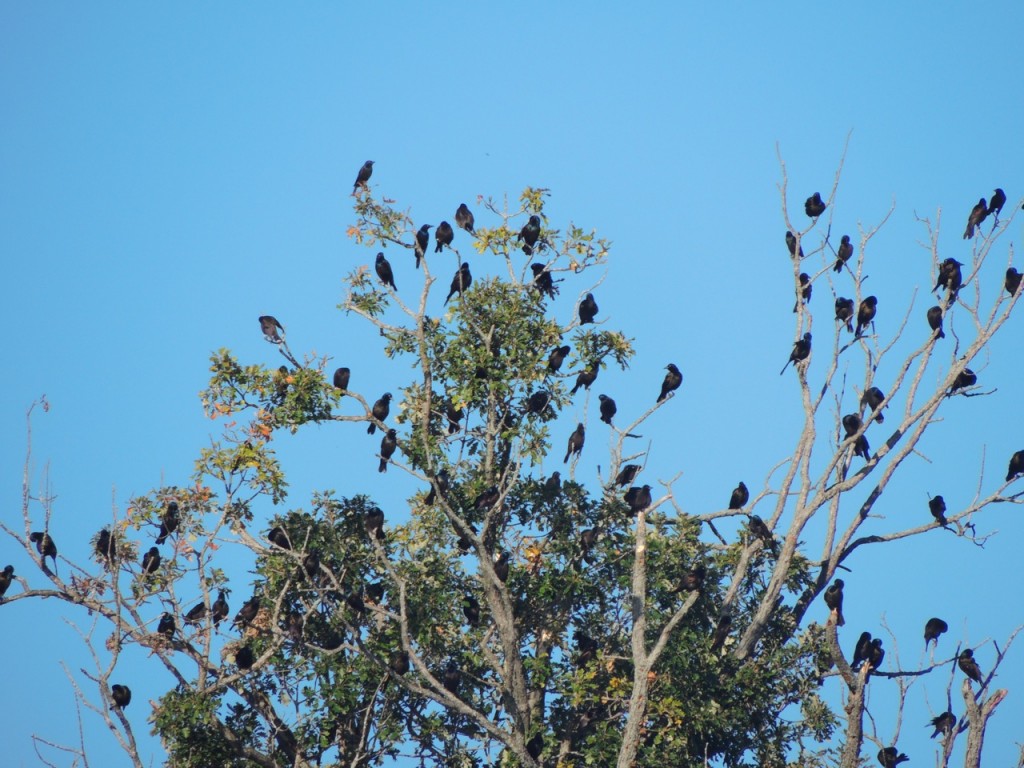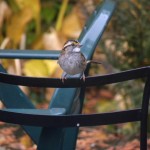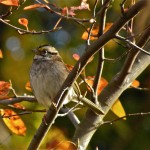26 September 2014. Cayuga ON. For reasons that will likely remain a mystery, the beautiful, Indian Summer weather of the past 24 hours resulted on a paltry collection of bird species, yet two days ago, under the same weather conditions, the birding was exceptional. Doing the daily census today, I found a scant fifteen species; two days ago thirty-four. All part of the mystery that makes this such an interesting study I suppose.
Far and away the best sighting of the morning was enormous flocks of blackbirds; they seemed to comprise equal numbers of Red-winged Blackbirds and Common Grackles, but it is quite possible there were a few European Starlings or some Rusty Blackbirds mixed in; it was impossible to tell. I came upon the flocks while doing the census, I heard their racket long before I saw the birds. Racket, din or cacophony, any of those would fit, it’s not that the volume was high, it was just the overwhelming sensation of a sky-high wall of chatter. How many birds were there I have no idea, I wrote down 2,000 Red-winged Blackbirds and 2,000 Common Grackles, but it could quite posibly have been twice that number; or just as easily half. They filled the branches of several large riverside oak and hackberry trees, gossiping, sallying out for a quick fly-around or just slipping over to visit friends until, for who knows what reason, they decided it was time to move on. In my diary I wrote: “They left in chattering streams heading over the mansion and away. They seemed to suck all the life out of the census round”. They were Birds of the Day; sheer numbers have it.

Had I not encountered the blackbirds I think a young male Northern Parula that we banded would have stolen my heart. Parulas have an appeal built on downright prettiness, it’s not that they’re rare, not especially anyway. But seeing one is always a rare treat. And then again, the first White-throated Sparrows of fall are quite captivating too, and we saw and banded several. Again, it’s not that they’re rare, they pass through each spring and fall, heading to cooler boggy areas in which to breed. (In fact, there are a few breeding pairs just 50 Km. north of the bird observatory but in dark bogs and swampy woodlands; almost a world away.) White-throated Sparrows have an appeal built on their, at times, elusive nature poking around in the understory but then a quite compliant, almost resigned, attitude once caught in a mist net and banded. Pretty too. Here’s a couple of photos of White-throated Sparrows from previous encounters.

